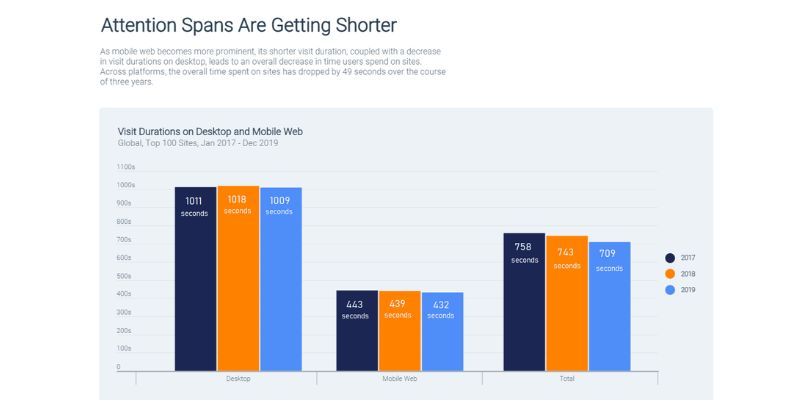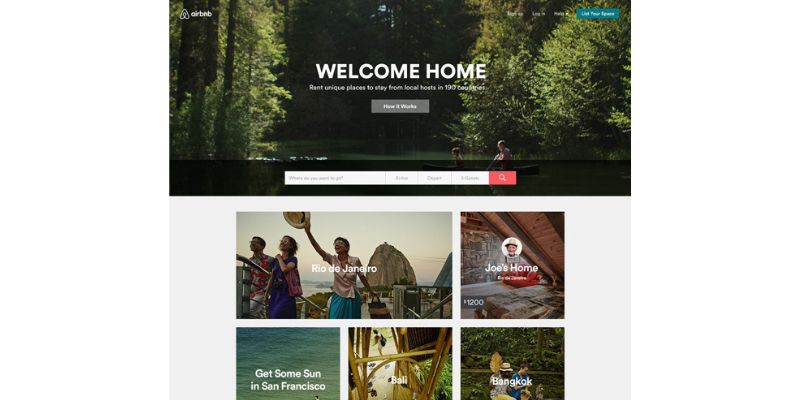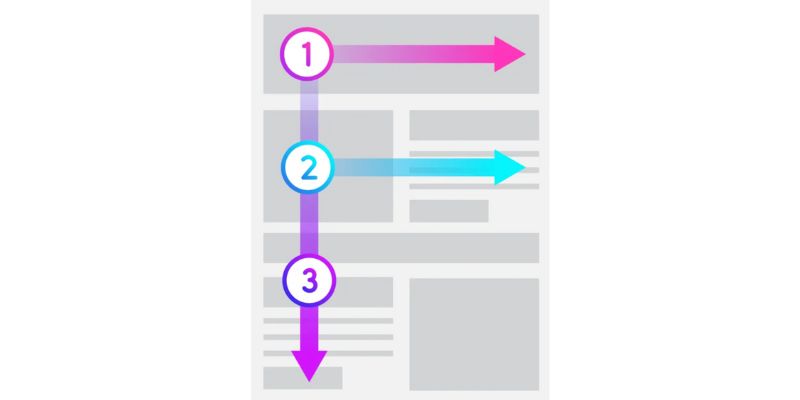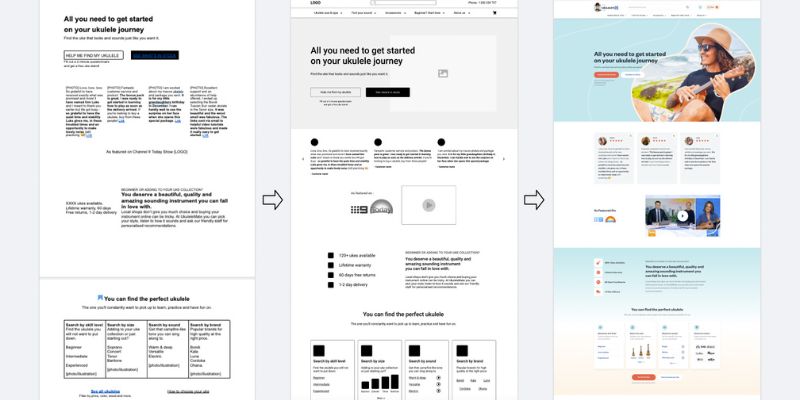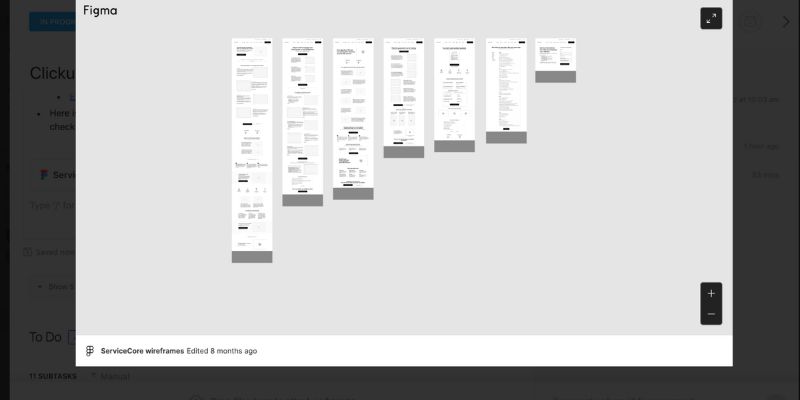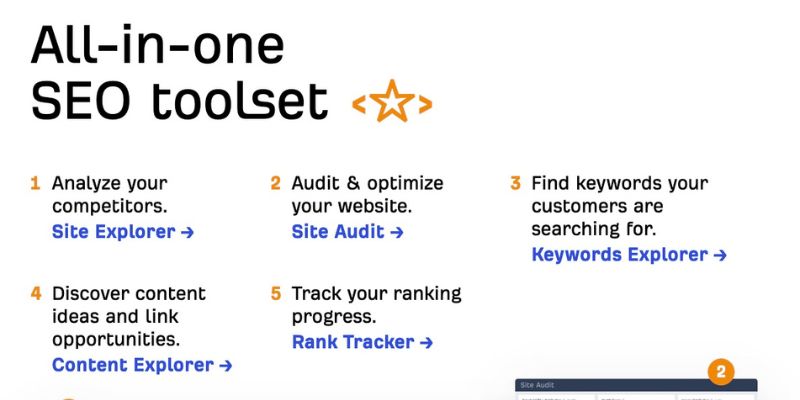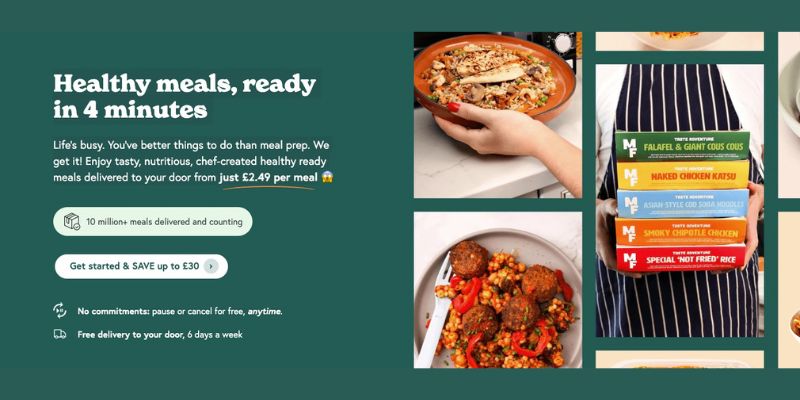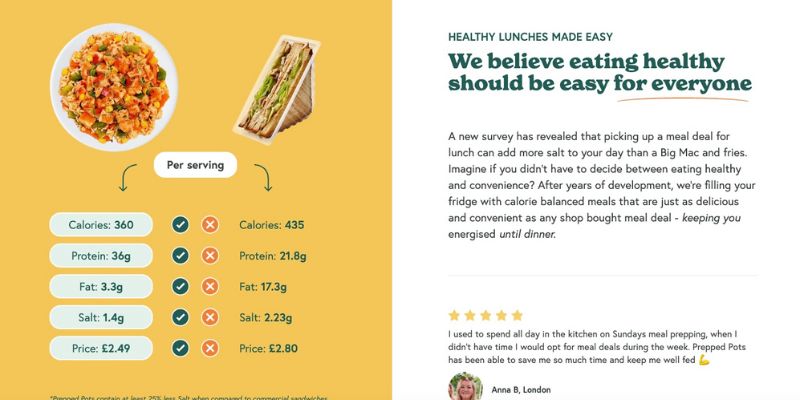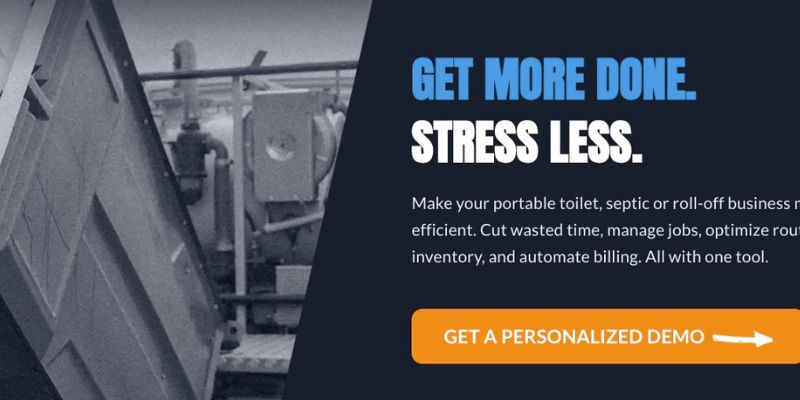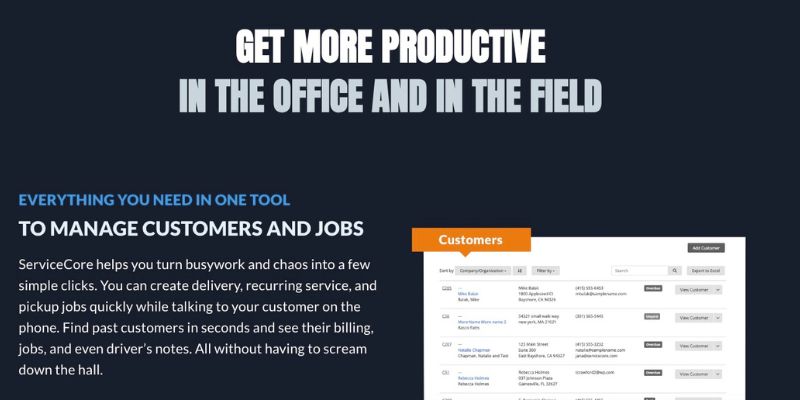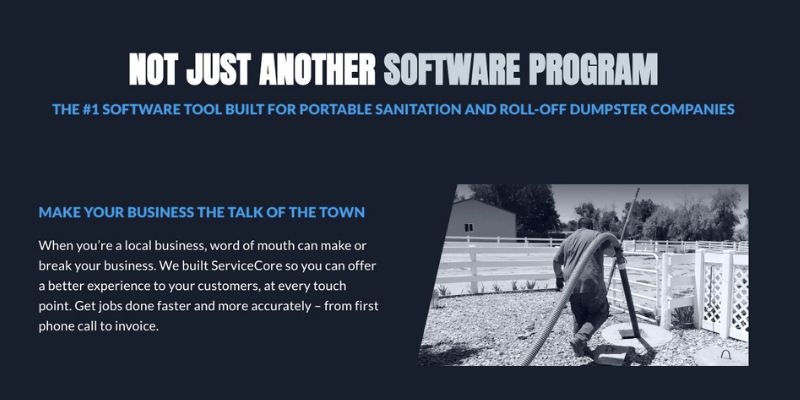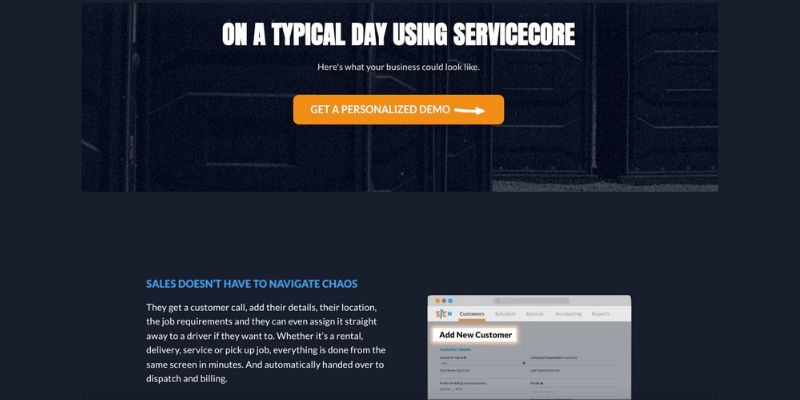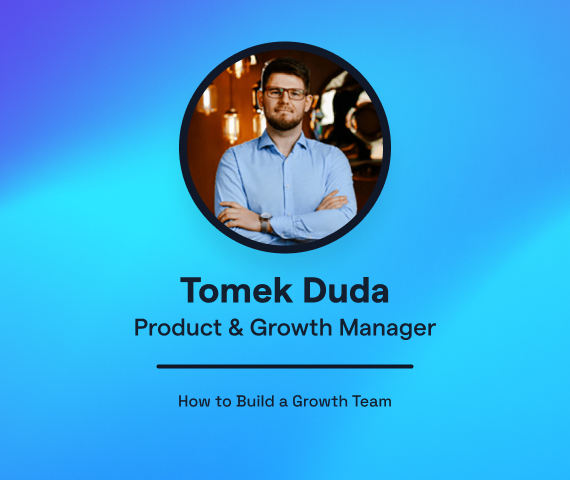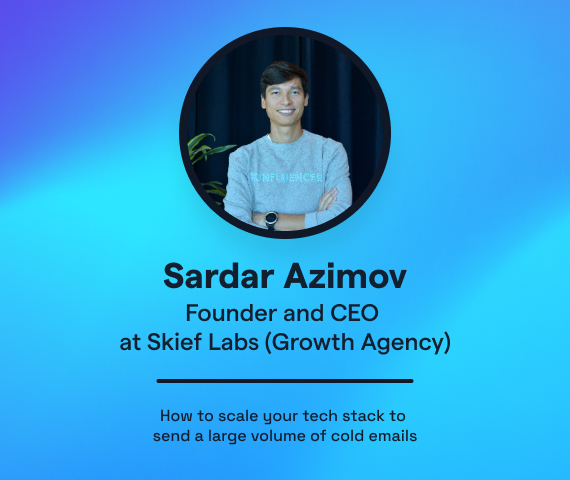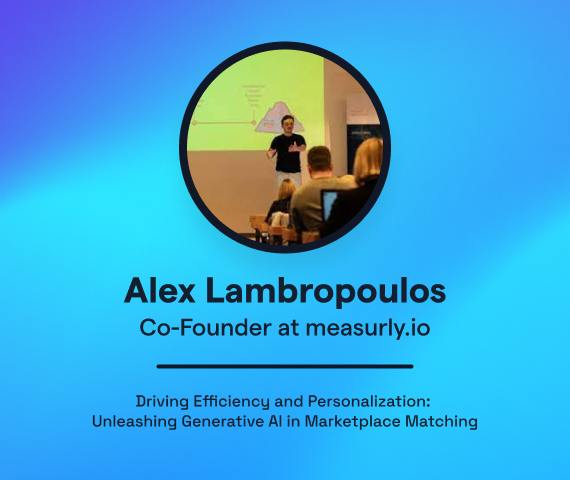Conversion Copywriting Guide: How to Increase Website Conversions in 2024
What if you could nearly double your revenue without changing your pricing or product?
It’s simpler than you think.
A minor tweak in the text on your button could make a major difference.
In one example, simply switching the button copy from “Start your free 30-day trial” to “Start my free 30-day trial”, increased the percentage of website visitors who clicked on the button by a whopping 90%.
That’s nearly doubling your revenue with one word!
This is the power of conversion copywriting.
As we said, simple. But easy? Not so much.
In this guide, we’ll talk about what conversion copywriting is, and we’ll walk you through 10 strategies to make the most of your digital assets with it. Finally, we’ll share a couple of real-world examples of conversion copy done right.
Let’s dive in.
What is conversion copywriting?
In a nutshell, conversion copywriting is all about writing to persuade.
It’s the art and science of crafting compelling messages that drive your readers to take specific actions. This could mean anything from making a purchase, filling out a form, downloading an eBook, signing up for a newsletter, or hitting that “like” button on YouTube.
You might already be familiar with the term copywriting. But how is conversion copy different from what’s out there? Let’s break it down:
Direct response: Think of direct response as the copy that’s designed for a particular asset: an email marketing campaign, a sales page, landing pages, a video sales letter, etc. As the name implies, this is a copy designed to get an almost immediate, measurable response. On the other hand, not all conversion copy has to necessarily produce a response (like a copy for your “About us” page for example), but might lead to it down the line.
Content writing: Content spurs a conversation with your audience. It’s about sharing valuable information, sparking discussions, and establishing yourself as a go-to expert. While it can include elements of conversion copywriting, its main goal is often to engage and inform. This is the writing you get on blog posts, like this one. Think “education and engagement”.
Traditional advertising copywriting: Traditional copywriting is the old-school cousin of conversion copy. You can find it in print advertising like brochures and billboards. It’s still about selling, but it doesn’t always have the laser-focused goal of conversion that conversion copywriting does. Traditional advertising copy is a lot about brand image and communicating emotions that, eventually, will lead to a purchase down the road. Traditional copywriting is also not as measurable.
This gives you a pretty good picture.
But here’s the thing: no reader will blindly take action unless you write copy that starts from you understanding their wants, needs, fears, and aspirations.
I headed on Twitter and asked some of the top conversion copywriters out there how they would define it. They all agree on this:
Lianna Patch:
“How do you define conversion copywriting? Pretty much the same way Joanna Wiebe, who invented the term, defines it: Copy built on customer research (not cutesy fake personas or best guesses) that gets people to take action.”
Josh Garofalo:
“I define conversion copywriting as building bridges between the market’s wants, needs, and desires and my client’s products and services. Doing this well requires understanding the market and its players (positioning), knowing which angles to touch on (messaging), and which words to use to inspire action (writing).”
Sam Woods:
“[Conversion copywriting is] Copy that is direct and generates clear, measurable results. It’s not content.”
Justin Blackman:
“[Conversion copywriting is] words that make people take action”
Remember? Simple, not easy.
What role does conversion copywriting play in digital marketing in 2024?
When our attention spans have shrunk to an average of just 8.25 seconds, and where we can only pay attention to one screen for an average of 47 seconds, conversion copywriting is more important than ever.
It’s the difference between being heard and being ignored in a landscape where competition gets fiercer and fiercer.
But grabbing attention is only the first step — it’s also about communicating effectively, creating a connection, and cultivating trust.
In order to do that, as our copy pros say, you first need to understand your audience’s needs, desires, and pain points, and then position your offering as the solution. With conversion copywriting you can increase engagement, boost conversion rates, and ultimately, grow revenue. It’s a key player in customer acquisition, retention, and overall business growth.
And if you’re on the verge of a big redesign project and still doubt the importance of the words you use on your website, know that, across industries, copy is 2x more important than design when it comes to conversions.
In a world where every click, every view, and every second of attention matters, conversion copywriting is the bridge that connects business goals with customer satisfaction.
Knowing this is half the battle, but how do you actually do it?
10 tips for effective conversion copywriting
1. Understand your audience
Understanding your audience is the key to successful conversion copywriting. It’s not about speaking to your audience, it’s about speaking with them. It’s crafting messages that resonate on a personal level.
The best, most effective conversion copy is conversational.
Airbnb didn’t become a multi-billion dollar company by accident.
They did it by understanding their audience. They knew that travelers were looking for unique, local experiences, not just a place to sleep. They knew their audience wanted to feel like they belonged, no matter where they were in the world.
But how did they figure it out? They did their homework. They listened to their customers, conducted market research, and used that information to inform their marketing strategy. And it worked. Their “Belong Anywhere” campaign resonated with their audience and helped Airbnb grow into the successful company it is today.
A few of my favorite ways to collect audience research and feedback are surveys, interviews (with customers, non-buyers, and team members), diving into reviews and testimonials (for competitors too), usability testing, and many more.
Ok, once you know who you’re speaking with, how do you get their attention?
2. Craft a strong headline
A headline is the first thing that your audience will read. It’s your chance to make a first impression, grab attention, and entice your audience to read more. It tells your audience “This is something you’ll be interested in, this is something you’ll benefit from.”
A good headline can be the difference between a user clicking on your link or scrolling past it. It can be the reason why your website visitors keep reading, and ultimately, buy from you.
Advertising legend David Ogilvy used to say “On the average, five times as many people read the headline as read the body copy. When you have written your headline, you have spent eighty cents out of your dollar.”
It’s a conversion copywriter’s mantra that’s as true in 2023 as it was in the 1960s.
But what makes a good headline?
If you’d only have to remember 3 things, consider these:
-
- Keep it short and sweet (most times): according to CXL, the highest converting headlines are either between 5 and 9 or 16 and 18 words. A lot of it depends on the context where they’re used
- Check your headline against the 4 Us: a great headline should always be unique, ultra-specific, urgent, and useful:
- Unique: The headline should stand out and offer something that your competitors don’t. It should be different and not generic
- Ultra-specific: The headline should be clear and specific about what the reader can expect from the content. It should not be vague or ambiguous
- Urgent: The headline should convey a sense of urgency. This encourages the reader to act immediately
- Useful: The headline should communicate a benefit or value to the reader. It should answer the question, “What’s in it for me?”
- Borrow from what works: Why start from scratch when we know what works? Headline formulas are like cheat sheets to kickstart your creativity, help you find a compelling angle, and make sure your headlines are the kind that stop people in their tracks
Hooking readers is where it all starts. Your job next is to…
3. Keep them reading with conversion copy frameworks
What makes great conversion copywriting work so well? Is it a sprinkle of magic dust, a spark of creativity, or just sheer luck?
None of those.
It’s the use of carefully chosen words, structured using tested copywriting frameworks. Think of these frameworks as the blueprint to your dream house – they guide your writing, ensuring that every word, every sentence, every paragraph serves a purpose and guides your reader on a persuasive journey.
Here are 3 I always go back to:
- AIDA: stands for Attention, Interest, Desire, and Action. It helps you create copy that grabs your reader’s attention, piques their interest, builds desire for the product or service, and encourages them to take action. In short, it takes them on a journey. I love how Neville Medhora explains it in simple, visual terms
- PAS: Problem, Agitation, Solution – It works particularly well when you know your audience comes to you with a very vivid pain in mind. You mirror their problem, make it vivid, and show them how you can fix it
- PPP: Picture, Promise, Proof, Push, is all about painting a vivid picture of the benefits your product or service offers, promising that these benefits are within reach, providing social proof to back up your claims, and then giving a gentle push towards taking the desired action. This is great, especially for writing long-form, emotional conversion copy
While these frameworks can be powerful tools to guide and structure your writing, they can’t just magically make it convert. In order to pick the one that works best for you, and to know how to fill it in, guess what… you have to go back to your audience.
This is where understanding ideas like audience awareness, sophistication, and psychographics, come into play. In short, what and how much do they know about their problem and pain points, the market, your brand, and your product? What drives their behavior? Eugene Schwartz wrote the bible on this.
Getting visitors to go through your whole page or email is great, but conversion copywriting is all about the action they take after reading. Here’s how you make it easy for them…
4. Use a clear Call-to-Action (CTA)
The call-to-action (CTA) is a vital part of any marketing strategy.
It’s the part of your message that tells your audience what you want them to do next. It might be to sign up for a newsletter, to download white papers, or to make a purchase.
But, it’s more than a button or link. It’s a connection between you and your customer. It’s also a way to build a relationship, to create a dialogue, to make your customer feel valued and important.
- Be clear about what you want: your CTA should tell your audience exactly what you want them to do. It should be direct and to the point (don’t just say “Click Here.”, instead, say “Download Our Free Guide.”)
- Make it about them: your CTA should speak to your audience’s needs and desires. Instead of saying “We have the best product,” say “Find the perfect product for you.” or “Schedule your free consultation”
- Create a sense of urgency: if your audience thinks they have all the time in the world to act, they might put it off. Creating a sense of urgency can encourage your audience to act now
- Make it stand out: your CTA should be easy to find and hard to ignore. It should stand out from the rest of your content. You can do this through design, such as using a contrasting button or link color or using formatting to emphasize it
- Test and tweak: The best way to create a powerful CTA is to test different versions. You can test different wording, different colors, different placements, and different sizes
By now, with a good understanding of your audience, an attention-grabbing headline, a compelling argument, and an effective CTA, you’re in a pretty good spot to convert your readers. But there are a couple of more advanced strategies you can use to make it all even more powerful…
5. Address objections proactively
You’re at a car dealership. You’re looking at this sleek, midnight blue convertible – the car of your dreams. But, there’s a tiny voice in your head whispering, “What about the fuel consumption? The maintenance costs?” Then, as if reading your mind, the salesperson brings up the car’s incredible fuel efficiency and affordable maintenance plan.
Suddenly, that dream car feels like something you can actually have in your garage!
That is the power of proactively addressing objections. It’s about understanding your customer’s concerns and doubts and addressing them head-on.
For example, for a Software as a Service (SaaS) business converting free users to paying customers can be tough, especially when it’s not clear what the benefits of upgrading are. What if they introduced onboarding emails that vividly showcased the perks of their premium plans?
You can also do this very well with a targeted and contextual FAQ section.
Addressing objections proactively in your copy does two things…
- It eases the path to purchase, smoothing out any bumps of doubt
- It shows you understand and empathize with your customers. You’re not just selling; you’re building a relationship
Understanding your customers and figuring out what questions they typically ask, or what doubts they often come up with, is how you get the insights that can help you craft powerful, persuasive copy.
6. Consistency is key
Consistency in brand voice and messaging isn’t just a nice to have; it’s a vital element of successful marketing.
A steady, coherent brand voice across all channels and media, influences how consumers perceive and engage with your brand. It builds credibility, reliability, and trust.
The first brand that comes to mind when I think about consistency? Apple. Their constant emphasis on design and innovation echoes throughout all their communications. It creates a strong, memorable brand identity that people trust and are willing to pay a premium for.
Brand voice isn’t just about what you say – it’s also about how you say it. And it’s made up of:
Vocabulary: This is your brand’s language – the words and phrases you use. It should align with your brand’s personality and resonate with your audience. For instance, a fun, youthful brand may use more informal, playful language, while a luxury brand might opt for more sophisticated, elegant writing.
Cadence: Cadence refers to the rhythm and pace of your brand messaging. Some brands might have a fast, energetic cadence, with choppy, short sentences. Others might be more slow and thoughtful, with longer and more articulate paragraphs. Your cadence can help convey your brand’s mood and personality.
Tone: Tone conveys emotion and attitude. It can be serious, humorous, professional, casual, or any number of things. Your tone can vary depending on the context, but it should always feel authentic to your brand.
Consistency starts with a well-documented brand style guide.
Use your guide to maintain your brand’s voice across all platforms – from your website and email marketing to your social media posts and customer interactions. For more on this, I always recommend BrandVoiceAcademy.
7. Make your copy easy to read and skim
It’s true that, as readers, we are hardwired to look for information that can benefit us, and if the information isn’t readily available or easy to find, we move on. So, how can we make sure our audience can find what they are looking for in our copy?
Understand where your reader’s eye goes
We tend to read in an ‘F’ or ‘Z’ pattern.
For example, on your landing page place your most compelling statement or value propositions in the ‘F’ shaped area where viewers first look, followed by supporting information and call-to-action (CTA). This ensures that the key message stands out, even if visitors skim through the rest.
Similarly, bullet points, subheadings, and paragraph breaks make the content easy to scan and understand. A single, unbroken block of text can feel daunting, so breaking up the content not only improves the readability but also enhances the overall user experience.
Use bold, italics, and underlining, as well as white space strategically to draw attention to key points and make the text easier to read and consume.
Which leads us to…
8. Wireframe your copy for better results (and fewer questions)
If you’re not in the know, wireframing is the process of creating a simplified visual guide, a blueprint that represents the skeletal framework of a website or an app. It’s a crucial step in any web or app design process, but it can be your secret weapon in conversion copywriting too.
Here’s an example of how your copy can evolve from a simple text document to a wireframe and finally mockup/design:
At this point, you might be wondering, “Why should I bother turning my copy docs into wireframes? Can’t I just go straight to designing the page?” For a few game-changing reasons.
Imagine you’re working on the homepage for a tech startup.
Your company’s unique selling point (USP) is on point, and you want to share that message loud and clear. With a wireframe, you can visualize exactly where this piece of information should go for maximum impact. Should it be a bold header? Or would a punchy call-to-action button work better? With wireframing, you can experiment with these placements, testing the effectiveness of each before deciding on the best approach.
Wireframing also lets you visualize the flow of your page
If you’ve crafted a compelling narrative with your copy, you’ll want to make sure it flows in a logical and engaging way. For instance, if you’re building a page for your e-commerce business, you’d want to guide your potential customer from understanding the unique value proposition, to seeing the products, to finally making a purchase. Wireframing enables you to map out this journey, helping to ensure a smooth and persuasive user experience.
As a bonus, if you’re writing copy as part of a team or for clients, wireframing is the best way I’ve found to cut revisions by 90% and get everyone on the same page – even before going into the design stage.
If all of this looks like a lot of work, well, it is. Lucky for you there are ways you can shortcut both your learning curve and get more done, faster…
9. Use AI to get more done, better
Artificial intelligence is redefining the way we approach conversion copywriting. It can be a game changer in your research, analysis, and idea generation work.
In research, AI can efficiently help you collect and surface huge amounts of data about your audience, their behavior, preferences, and needs. When you use it properly, you can go beyond traditional demographics to dig into psychographic profiles and get a more nuanced understanding of your target audience. You can also use it as a junior copywriter to get you started with survey or interview questions you can then personalize and refine.
When it comes to analysis, with AI it’s easier and faster to make sense of all that data. For example, I use ChatGPT to extract and report on themes from customer reviews (message mining), summarize interview transcripts, define a brand’s voice and turn it into guidelines, and much much more.
AI can spark a ton of ideas faster than you can think. They won’t be all great, but you’ll be able to widen your perspective, explore opposite directions, and get more creative when needed.
Last, but not least, once the persuasive writing and refining is done, keep in mind that there’s always room for improvement…
10. Test your copy
Ok, by now you have your powerful, persuasive conversion copy laid out in wireframes ready to go live.
A bit of a back and forth with your designer and you’re ready to reap the rewards of a 10x increase in conversions.
Except, your job is not done yet! Told you, simple, not easy.
Your copy isn’t set in stone once you’ve hit the publish button
Great copy is a living, breathing entity that can always be improved.
How? By testing, of course.
One way to do this is through A/B split testing. It’s as simple as creating two versions of your copy (version A or the control, and version B) and seeing which one performs better. Maybe Version A has a more casual tone and Version B is more formal. Or perhaps the difference is in the length of the copy or the calls to action. The key here is to track the performance of both and see which one gets you the best results.
Usability testing is another low-cost tool you can use to validate your copy before calling it a day. You have real people using your product, service, or website while you watch and learn.
- What do they love?
- What confuses them?
- Do they click where you want them to?
Their feedback can give you invaluable insights into how to improve your copy. But most importantly watch what they do, don’t just listen to what they say.
Other great ways to test your copy can be:
- Multivariate testing (where you test multiple variables simultaneously to find the best combination)
- User interaction analysis (with heat maps that show you where your users are clicking, moving, and scrolling on your page)
- Customer surveys (great for gaining direct feedback from your audience)
- “Social listening” (simply keeping a pulse on social media, review sites, and other platforms to see how people are talking about your brand, your industry, and your competitors)
🎁 Bonus tip!
I wanted to go back to my fellow conversion copywriting pros and ask them what their #1 conversion copywriting tip is, here’s what they said:
Lianna Patch, Punchline CopyWhat’s your #1 conversion copy tip? HAVE A DAMN SENSE OF HUMOR! You may not have expected this tip from a person who runs a company called “Punchline”. But for real, being funny has all sorts of benefits in copy — from boosting information recall (AKA making you more memorable) to creating deeper relationships (AKA keeping clients and customers around). Plus, it’s just more fun to be the funny brand.
Josh Garofalo, Sway CopyGreat copywriters aren’t in the word business. Great copywriters are sales professionals, product marketers, UX designers, journalists, and keen observers of the human condition. Writing is the easy part — it’s where we find relief after absorbing an entire market’s worth of data. Realize this if you’re a copywriter or someone trying to hire a great copywriter (and not simply a wordsmith). AI will eat your lunch if you’re in the word business. AI isn’t close to doing all of the above reliably.
Sam WoodsWrite robot, edit human. Copy is assembled and it’s easier, faster to get excellent copy from the quantity that you cut down, cut out, and keep the best.
Justin Blackman, PrettyFlyCopyMy #1 tip for conversion copywriting is to make sure your messages match. The words, voice, imagery, and tone should be consistent from your ad to the landing page to help the reader know they’re in the right place. It builds trust and makes them feel safe. A simple repetition of a phrase, headline, or picture between pages acts as a visual trail marker that shows people they’re going where they want to go. And the consistent voice says there’s no bait and switch. It’s an easy way to goose conversions.
Now that you’re an expert conversion copywriter (or at least you know more than 99% of people), let’s bring it all together with some real-world examples from websites out there in the wild.
Case Studies: Real-life effective conversion copywriting examples
AHREFS: Laser-focused and authoritative SaaS copy
One quick look at AHREFS’ website and two things might happen: you’re either hooked, or you have no idea what they’re talking about. This is the power of conversion copy. As we’ve seen, when you do it right, your copy gets very specific and often, polarizing. That’s because you’re speaking with your exact target audience.
Take their headline: “Everything you need to rank higher & get more traffic”.
Not much context right? The thing is the right people – the SEO experts – will get it. And they will keep on reading.
What about this section:
It clearly tells visitors what they do in a language they can understand and resonate with. Plus it makes it easy to skim and find out more about each feature.
Same with their social proof. To follow their customer logos they say “Ahrefs is used by marketers from the world’s leading companies.”.
Not to talk about how they establish authority and credibility. Just look at these examples of using numbers and proof to make the sales copy really come to life:
- ”18,292 users joined Ahrefs in the last 7 days”
- “We’ve been crawling the web for over 10 years, collecting and processing petabytes of data every day.”
- “64% of SEO professionals trust Ahrefs’ link data over its competitors. The next closest competitor (GSC) only had 14% of votes”
- “67% of SEO professionals use Ahrefs’ Domain Rating as their SEO metric of choice”
If you want to build trust and authority in your space, study their site.
Prepped Pots: Fun and relatable conversion e-commerce conversion copy
I’ve personally used Prepped Pots for the past 2 years and I have to say their website’s quality matches their product.
As a customer, they speak to my exact pain points and motivations. Their value proposition?
“Healthy meals, ready in 4 minutes – Life’s busy. You’ve better things to do than meal prep. We get it! Enjoy tasty, nutritious, chef-created healthy ready meals delivered to your door from just £2.49 per meal”
Exactly what I was looking for. I wanted food that’s still healthy but quick and easy to prepare, but also not as expensive as other prepared meal services you find online. And they delivered (literally).
They also do a great job at addressing common objections with web copy like:
“Imagine if you didn’t have to decide between eating healthy and convenience? After years of development, we’re filling your fridge with calorie-balanced meals that are just as delicious and convenient as any shop-bought meal deal – keeping you energized until dinner.”
And look at that customer review supporting it:
Especially if you live in the UK (like me), you’re familiar with meal deals you can find in grocery stores. Having this comparison gives you a much better idea of the value you get out of this.
Running an e-commerce business and want to stand out? Dig into their copy.
ServiceCore: B2B SaaS copy doesn’t have to be boring or stuffed with jargon
I worked on ServiceCore’s website last year and it’s been one of my best client experiences so far. It’s a great example of a B2B company that’s not afraid to push the envelope a little bit.
We worked on making sure their copy speaks to the true operators they deal with every day, which is – people who are skeptical about software!
So we needed to enter their own world.
Their value proposition goes into the exact needs they have in mind:
“GET MORE DONE. STRESS LESS”. Make your portable toilet, septic, or roll-off business more efficient. Cut wasted time, manage jobs, optimize routes, track inventory, and automate billing. All with one tool.”
And again, we’re ultra-specific when it comes to what their product does:
We also worked hard to address any potential objections upfront, especially for these buyers who are not familiar with and often are afraid of software.
To make it even more engaging, we decided to turn their “How it works” page from a mere product walkthrough into a “Day in the life” of their customers:
I might be biased, but if you’re in a particularly “unsexy” B2B industry, rejoice! You don’t need to be boring or conform to the standards.
Turn conversion copywriting into your secret weapon
Hopefully, you have a much better idea of what conversion copywriting is and how it can help you.
Keep in mind, there’s way more to it than what we’ve covered, and as I mentioned, it’s an art and a science. The best way to make sure your copy works is always to go back to the market and see how well it holds up once live.
But with these few tips, you’ll be in a much better position to shortcut your learning curve.
The future of conversion copywriting looks brighter than ever. When a lot of people see AI as a competitor, I truly see it as a partner and an incredibly useful writing tool. It’s the reason why I’ve been able to work with double the amount of clients so far this year – without growing my team. And to get even better results for them.
But don’t forget, as we’ve mentioned multiple times before you “break the rules” you have to learn them. Study the principles of effective conversion copywriting from the pros, experiment, and put them into practice daily and you’ll build a future-proof business.


